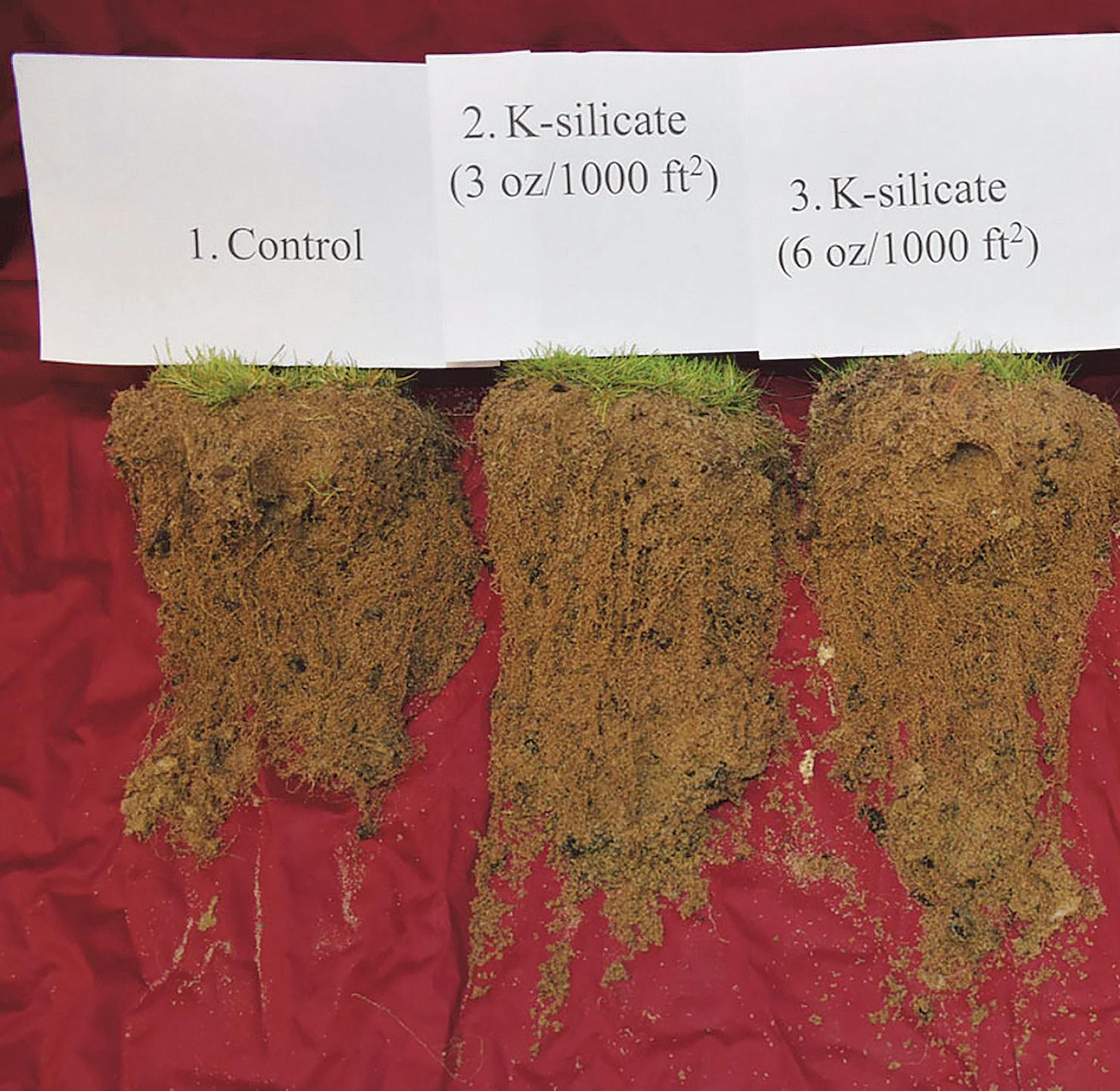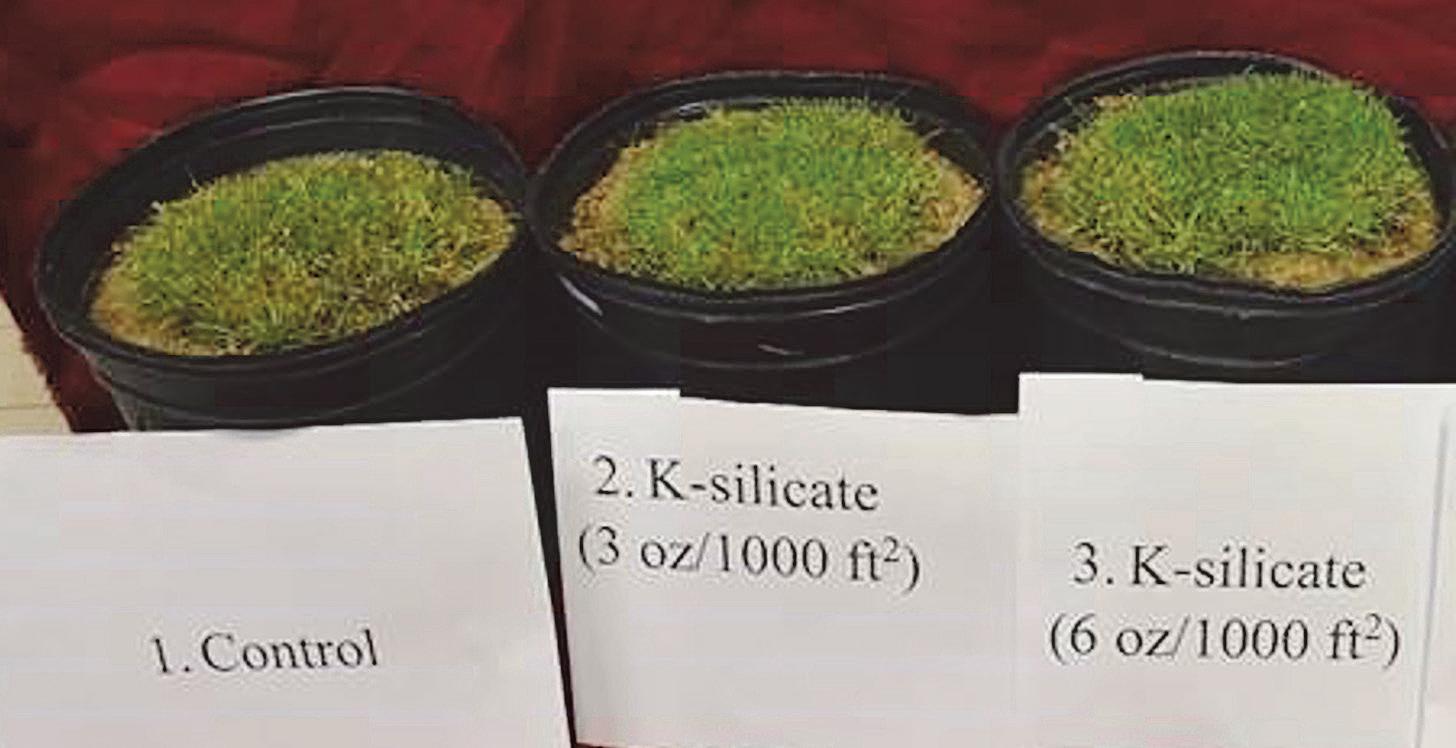
3 minute read
Evaluating Effects of Silicon…
Evaluating Effects of Silicon on Summer Stress Resistance in Creeping Bentgrass
By Xunzhong Zhang, Ph.D., Mike Goatley, Ph.D., Isabel Brown, and Kelly Kosiarski School of Plant and Environmental Sciences Virginia Tech, Blacksburg, VA
Advertisement
Silicon (Si) is naturally absorbed by plants from soil as monosilicic acid, Si(OH)4. Although Si is not considered to be an essential macronutrient, the content of Si in some plants can be in the range of certain macronutrients. These Si deposits are commonly found where their presence acts as a surface-area defense system (on leaf and stem hairs, and on the outer epidermal walls) which benefits plant tolerance to drought. Silicon is also considered as a biostimulant, influencing plant physiological fitness under abiotic stress. The objective of this study was to evaluate potassium silicate (provided by Harrell’s LLC, Lakeland, FL) on physiological fitness and quality of creeping bentgrass under heat and drought stress conditions.

PHOTO 1. The turf quality as affected by Si treatment in creeping bentgrass under drought and heat stress conditions at the end of the trial (June 9, 2021)
Mature ‘A4’ creeping bentgrass plugs from field plots were transplanted into pots filled with a USGA sand. After one month of non-stressed growth with optimum temperature, water, fertilizer, and light, the pots were placed in a controlled environment growth chamber at 95 F day (12 h)/77 F night, light intensity at 400 µmol m-2 s-1, 12 h photoperiod, and 65% relative humidity. Drought stress was induced by deficit irrigation based on evapotranspiration (ET) replacement. These conditions simulated summer putting green stress. The treatments included 1). Control; 2). Potassium silicate at 3 fl oz/1000 ft2; and 3). Potassium silicate at 6 fl oz/1000 ft2. A randomized block design was used with four replications. The solutions of potassium silicate product were applied to the canopy biweekly. All treatments received identical nitrogen fertilization. The trial lasted for 8 weeks. Leaf color was rated on a visual 1-9 scale with 9 indicating dark green color and 1 indicating brown color. Photochemical efficiency (PE) was measured with a chlorophyll fluorometer (OS-50II). Leaf samples were collected biweekly for analysis of chlorophyll and antioxidant enzyme superoxide dismutase (SOD) activity. At the end of the trial, root viability was determined.

PHOTO 2. The root growth and viability as affected by Si treatment in creeping bentgrass under drought and heat stress condition at the end of the trial (June 9, 2021)
We found foliar application of potassium silicate at the highest rate (6 fl oz/ 1000 ft2) significantly improved leaf color rating. The product improved photochemical efficiency and chlorophyll content at both low and high rates. The potassium silicate increased antioxidant SOD activity relative to the control from day 28 through day 56. When measured at 56 days of stress treatment, application of potassium silicate at 6 fl oz/1000 ft2 increased leaf color rating by 7.8%, total chlorophyll content by 20.8%, and SOD activity by 42.6% relative to the fertilized control. Application of the potassium silicate at high rate also improved root viability. The preliminary results of this study suggest the potassium silicate product may improve turfgrass persistence during summer stress by enhancing antioxidant activity, photosynthetic function, and root viability.
We acknowledge Harrell’s LLC and the Virginia Agriculture Experiment Station for their support of this research.









